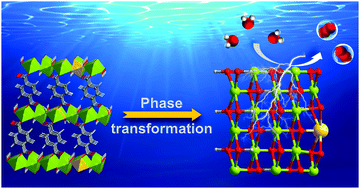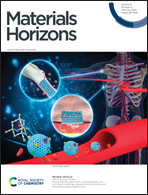In situ identification of the electrocatalytic water oxidation behavior of a nickel-based metal–organic framework nanoarray†
Abstract
Metal–organic frameworks (MOFs) have been identified as one of the promising electrocatalysts for the oxygen evolution reaction (OER). However, direct observation of the electrocatalytic behavior of MOF-based electrocatalysts remains extremely challenging, which is of great significance to understand their electrocatalytic mechanism. Herein, we developed a vertically oriented Ni-based MOF nanosheet array doped with 2.09 wt% Ce (denoted as Ce–NiBDC/OG). Ce–NiBDC/OG displayed a low overpotential of 265 mV to deliver a 10 mA cm−2 current density for the OER. In situ spectroscopy and operando microscopy visualized the phase transformation behavior of Ce–NiBDC/OG to Ce-doped NiOOH induced by electrochemical activation, which was regarded as the real active site. Mechanistic studies revealed that, for the Ce–NiBDC/OG-derived catalyst, the doping of Ce species in NiOOH significantly increased the adsorption of *OH, and further reduced the energy barriers of the rate-determining step (*OH→*O).

- This article is part of the themed collection: Materials Horizons Emerging Investigators Series 2020/2021


 Please wait while we load your content...
Please wait while we load your content...